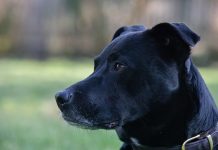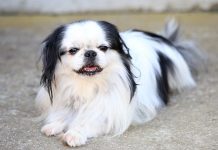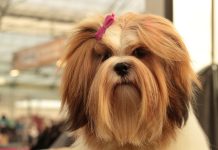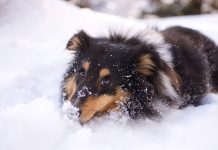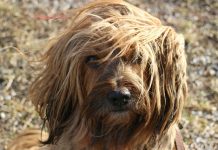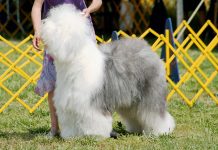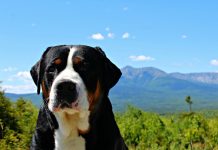History and Origins of the Pekingese Breed:
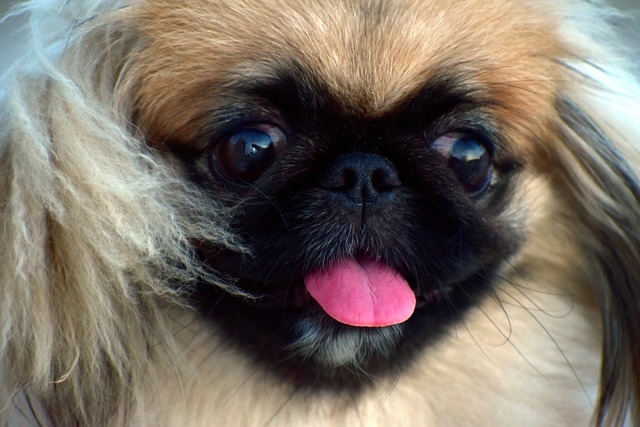
The Pekingese, also known as the “Lion Dog” or “Foo Dog,” is an ancient breed with a fascinating history rooted in imperial China. These small and regal dogs were highly esteemed by Chinese royalty and nobility, often serving as companions and lapdogs to members of the imperial court.
The origins of the Pekingese can be traced back over 2,000 years to ancient China, where they were selectively bred and revered for their association with Buddhist symbolism and mythology. Legend has it that the Pekingese is a cross between a lion and a marmoset, resulting in their distinctive lion-like appearance.
Historically, Pekingese were considered sacred and were only owned by members of the Chinese imperial family and high-ranking officials. They were kept within the walls of the Forbidden City in Beijing and were lavished with attention and luxury. The penalty for stealing or harming a Pekingese was severe, reflecting their esteemed status.
During the Second Opium War in 1860, British and French forces invaded the Forbidden City, and several Pekingese dogs were brought back to Europe as spoils of war. This event marked the introduction of the breed to Western countries, where they quickly gained popularity among nobility and aristocrats.
In 1906, the Pekingese breed was officially recognized by the American Kennel Club (AKC), and they have since become cherished companions and show dogs around the world.
Physical Characteristics and Appearance of Pekingese Dogs:
The Pekingese is a small toy breed known for its distinctive appearance and dignified demeanor. Here are the key physical characteristics and appearance traits of Pekingese dogs:
- Size: Pekingese are compact and sturdy dogs with a low-slung body. They typically weigh between 7 to 14 pounds (3 to 6 kg) and stand about 6 to 9 inches (15 to 23 cm) tall at the shoulder.
- Coat: Pekingese have a long, flowing double coat that is coarse and straight. The outer coat is dense and abundant, while the undercoat is soft and plush. They come in various colors, including gold, red, sable, black, and white.
- Face: Pekingese have a distinctive flat-faced (brachycephalic) appearance with a broad, flat skull and a short, broad muzzle. Their large, dark eyes are prominent and expressive, often described as “button” eyes.
- Ears: Pekingese have heart-shaped, pendulous ears that frame their adorable face. Their ears are heavily feathered with long hair.
- Tail: Pekingese have a high-set, plumed tail that curves over their back.
- Expression: Pekingese have a regal and dignified expression with an air of self-importance. Despite their small size, they carry themselves with confidence and grace.
- Gait: Pekingese move with a deliberate and rolling gait, reflecting their royal heritage.
Overall, the Pekingese’s unique appearance and historical significance make them a beloved breed among dog enthusiasts. They are characterized by their affectionate nature, loyalty to their families, and aristocratic bearing. Despite their small size, Pekingese possess a big personality and make wonderful companions for individuals and families alike.
Temperament and Personality Traits of Pekingese Dogs:
- Independent: Pekingese are independent and self-assured dogs. They have a strong sense of self and may display a dignified demeanor.
- Loyal: Despite their independent nature, Pekingese are deeply loyal and devoted to their families. They form strong bonds with their owners and enjoy being close companions.
- Courageous: Pekingese have a surprising amount of courage and bravery for their small size. They are not easily intimidated and will stand their ground when necessary.
- Alert: Pekingese make excellent watchdogs due to their alert and vigilant nature. They are quick to alert their owners to any potential threats or intruders.
- Affectionate: While Pekingese can be reserved with strangers, they are affectionate and loving towards their family members. They enjoy spending time with their loved ones and seek attention and affection.
- Regal: Pekingese have a regal and dignified presence, often carrying themselves with an air of importance. They appreciate being treated with respect and can be sensitive to harsh treatment.
- Intelligent: Pekingese are intelligent dogs, but they can also be stubborn at times. They respond well to positive reinforcement-based training methods that are consistent and patient.
- Low Energy Levels: Pekingese are not highly active dogs and are content with moderate exercise. They enjoy short walks and indoor play sessions but can easily adapt to apartment living.
Training and Socialization Needs for Pekingese Dogs:
- Early Socialization: Start socializing your Pekingese puppy early to help them become well-adjusted adults. Expose them to different people, places, sounds, and experiences in a positive and controlled manner.
- Positive Reinforcement Training: Pekingese respond best to positive reinforcement training techniques, such as treats, praise, and rewards. Keep training sessions short, engaging, and consistent to maintain their interest.
- Basic Obedience: Focus on teaching basic obedience commands such as sit, stay, come, and heel. Be patient and use gentle guidance during training sessions.
- House Training: Pekingese are generally clean dogs but may require consistent house training efforts. Use a regular schedule for potty breaks and provide positive reinforcement for good behavior.
- Patience and Consistency: Pekingese can be stubborn and may take longer to train compared to other breeds. Be patient, consistent, and persistent in your training efforts without resorting to harsh methods.
- Socialization with Other Pets: Introduce your Pekingese to other pets gradually and under supervision. Early socialization can help prevent aggression or territorial behavior towards other animals.
- Handling and Grooming: Start grooming and handling your Pekingese from a young age to get them accustomed to grooming routines. This will help prevent resistance during grooming sessions as they grow older.
By providing proper training, socialization, and affectionate care, Pekingese can thrive as loyal and loving companions. Their unique blend of independence, loyalty, and regal charm makes them a cherished breed for many dog enthusiasts.
Health Considerations and Common Issues in Pekingese Dogs:
Pekingese dogs are generally healthy, but like all breeds, they may be prone to certain health conditions. Understanding these common issues can help you provide proper care and early detection of any potential health problems:
- Brachycephalic Airway Syndrome: Due to their flat faces (brachycephalic anatomy), Pekingese may experience breathing difficulties, snoring, and heat intolerance. Avoid strenuous exercise in hot weather and provide a cool, well-ventilated environment.
- Luxating Patella: This is a condition where the kneecap (patella) dislocates or moves out of its normal position, causing limping or difficulty walking. Surgical correction may be necessary in severe cases.
- Hip Dysplasia: Pekingese may be prone to hip dysplasia, a genetic condition where the hip joint does not develop properly, leading to pain and arthritis. Regular vet check-ups and maintaining a healthy weight can help manage this condition.
- Progressive Retinal Atrophy (PRA): PRA is an inherited eye disorder that can lead to vision loss and blindness over time. Regular eye examinations by a veterinary ophthalmologist are recommended for early detection.
- Dental Issues: Pekingese are prone to dental problems such as tooth decay, gum disease, and tooth loss. Maintain good oral hygiene by brushing your Pekingese’s teeth regularly and providing dental chews or toys.
- Heat Sensitivity: Due to their flat faces, Pekingese are sensitive to heat and can easily overheat. Provide plenty of shade, fresh water, and avoid exercising them during hot weather.
- Allergies: Pekingese may develop allergies to environmental factors, food, or certain grooming products. Watch for signs of itching, skin irritation, or digestive issues and consult your vet for proper management.
- Obesity: Pekingese are prone to weight gain, which can exacerbate existing health issues such as joint problems and respiratory issues. Feed a balanced diet and monitor portion sizes to prevent obesity.
Living with a Pekingese: Suitable Environments and Lifestyle Considerations:
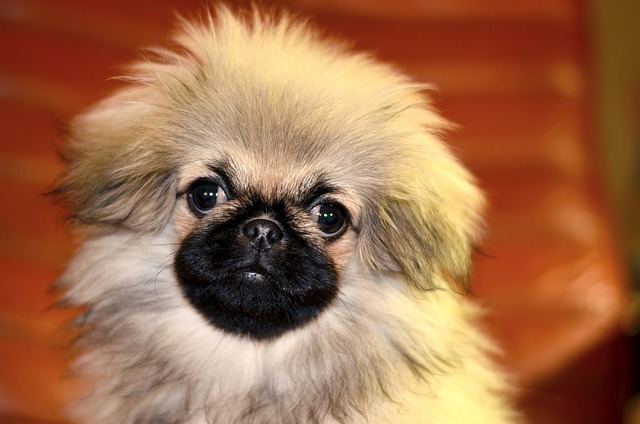
- Indoor Living: Pekingese are well-suited to indoor living and thrive in a calm and quiet environment. They are ideal companions for apartment dwellers but require supervision outdoors due to their small size.
- Grooming Needs: Pekingese have a long, dense coat that requires regular grooming to prevent matting and tangles. Brush their coat several times a week and schedule professional grooming as needed.
- Exercise Requirements: Pekingese have low to moderate exercise needs and enjoy short daily walks and indoor playtime. Avoid strenuous activities that can strain their joints and respiratory system.
- Temperature Control: Due to their sensitivity to heat, provide a cool and comfortable environment for your Pekingese, especially during warm weather. Use air conditioning or fans to keep them cool.
- Socialization: Pekingese benefit from early socialization to build confidence and prevent shyness or fearfulness. Expose them to various people, animals, and environments to promote positive interactions.
- Regular Veterinary Care: Schedule regular veterinary check-ups, vaccinations, and preventive care to monitor your Pekingese’s health and detect any issues early.
- Safety Measures: Due to their small size, supervise interactions with larger dogs and children to prevent accidental injuries. Use a harness instead of a collar for walks to protect their delicate neck.
By providing a suitable environment, regular grooming, proper nutrition, and attentive care, Pekingese can live long, happy, and healthy lives as cherished family members. Stay informed about their specific health considerations and consult your veterinarian for personalized advice and care.
Pekingese Variations and Breeding Practices
The Pekingese breed is relatively standardized in terms of appearance and temperament, but there can still be variations within the breed based on breeding practices and individual characteristics. Here are some aspects related to Pekingese variations and breeding practices:
- Coat Color and Pattern: Pekingese come in a variety of coat colors, including gold, red, sable, black, white, and parti-color (combination of two or more colors). Breeders may focus on producing specific coat colors or patterns through selective breeding.
- Coat Texture: Pekingese can have different coat textures, including straight, slightly wavy, or coarse. Some Pekingese have a more profuse or thicker coat compared to others.
- Size Variations: While Pekingese generally have a standard size range (about 6 to 9 inches at the shoulder and 7 to 14 pounds in weight), there can be slight variations in individual size within the breed.
- Facial Features: Breeders may focus on preserving or enhancing specific facial features, such as the flat face (brachycephalic), prominent eyes, and well-defined muzzle.
- Temperament and Personality Traits: Responsible breeders aim to produce Pekingese with desirable temperament traits, such as loyalty, independence, and affection. They may selectively breed dogs with predictable and stable personalities.
- Health Considerations: Ethical breeders prioritize the health and well-being of Pekingese by conducting health screenings for genetic disorders common in the breed, such as brachycephalic airway syndrome, luxating patella, and eye issues like progressive retinal atrophy (PRA).
- Maintaining Breed Standards: Reputable breeders adhere to breed standards set by kennel clubs, focusing on preserving the unique characteristics of the Pekingese breed, including their distinctive appearance, size, and temperament.
- Avoiding Exaggerations: Responsible breeders avoid breeding for extreme features that may compromise the health and well-being of Pekingese, such as excessively flat faces or overly profuse coats that require excessive grooming.
- Ethical Practices: Good breeders are transparent about their breeding practices and prioritize the welfare of their dogs. They provide proper care, nutrition, socialization, and veterinary attention to both parent dogs and puppies.
- Breeding for Health and Longevity: Some breeders focus on breeding Pekingese for improved health and longevity, selecting breeding pairs with a lower risk of genetic health issues and promoting overall well-being.
- Education and Support: Reputable breeders educate prospective owners about the breed’s characteristics, care requirements, and potential health considerations. They offer ongoing support and guidance to ensure the well-being of their puppies throughout their lives.
It’s essential for prospective Pekingese owners to research and choose a reputable breeder who follows ethical breeding practices and prioritizes the health, temperament, and welfare of their dogs. By supporting responsible breeding practices, you contribute to the preservation and well-being of this beloved and ancient breed.
50 Best Names with Meanings for Pekingese
Choosing a name for your Pekingese can be a fun and meaningful experience. Here are 50 best names with meanings that might suit your Pekingese:
- Ming: Means “bright” or “radiant” in Chinese.
- Lulu: Cute and playful name for a small dog.
- Yuki: Japanese name meaning “snow” – perfect for a white Pekingese.
- Winston: A strong and regal name.
- Chloe: Greek name meaning “blooming” or “fertility.”
- Gizmo: Fun and quirky name for a Pekingese with a big personality.
- Mochi: Japanese rice cake – sweet and adorable.
- Coco: Chic and stylish name for a fashionable Pekingese.
- Teddy: Perfect for a Pekingese that’s as cuddly as a teddy bear.
- Mimi: A cute and classic name for a small dog.
- Oliver: Meaning “olive tree,” a symbol of peace and tranquility.
- Minnie: Inspired by Minnie Mouse – sweet and charming.
- Bamboo: A nod to the Pekingese’s Chinese heritage.
- Pippin: Fun and lively name for an energetic Pekingese.
- Momo: Japanese name meaning “peach” – cute and fruity.
- Benny: Short for “Benjamin” – a friendly and approachable name.
- Pixie: Magical and enchanting, just like your Pekingese.
- Lola: Spanish name meaning “sorrows” – ironically perfect for a joyful dog.
- Toto: From “The Wizard of Oz” – a loyal and brave companion.
- Nori: Japanese name meaning “seaweed” – unique and memorable.
- Peanut: Adorable and small, just like a peanut.
- Panda: Inspired by the beloved black-and-white bear.
- Sushi: Fun and delicious name for a food-loving dog.
- Rosie: Derived from “rose” – sweet and feminine.
- Simba: Strong and courageous, like the lion king.
- Tinkerbell: Playful and mischievous, like the fairy.
- Toffee: Sweet and irresistible, like the candy.
- Ziggy: Quirky and energetic, perfect for a lively Pekingese.
- Oreo: Named after the popular cookie – black and white.
- Winnie: Short for “Winifred” or inspired by Winnie the Pooh.
- Ginger: Warm and spicy, just like your Pekingese’s personality.
- Sunny: Bright and cheerful, bringing sunshine into your life.
- Miko: Japanese name meaning “beautiful child.”
- Chewie: Fun and playful, like Chewbacca from Star Wars.
- Toby: Friendly and approachable, a great fit for any Pekingese.
- Peaches: Sweet and juicy, like a ripe peach.
- Honey: Sweet and endearing, perfect for a loving Pekingese.
- Muffin: Cute and comforting, just like a warm muffin.
- Sasha: Russian name meaning “defender of mankind.”
- Snickers: Named after the popular chocolate bar – sweet and satisfying.
- Lucky: Represents good fortune and happiness.
- Coco: Chic and stylish, like a fashionista Pekingese.
- Rocky: Strong and resilient, like a rock.
- Pablo: Spanish name meaning “small.”
- Daisy: Fresh and cheerful, like a field of daisies.
- Bella: Italian name meaning “beautiful” – a classic choice.
- Whiskey: Bold and spirited, perfect for a feisty Pekingese.
- Jasmine: Elegant and exotic, like the flower.
- Mochi: Sweet and delightful, like the Japanese dessert.
- Sparky: Energetic and lively, always full of spark.
Choose a name that resonates with you and reflects your Pekingese’s personality and traits. Whether you prefer a classic, trendy, or unique name, the most important thing is that it suits your beloved companion and makes you smile.
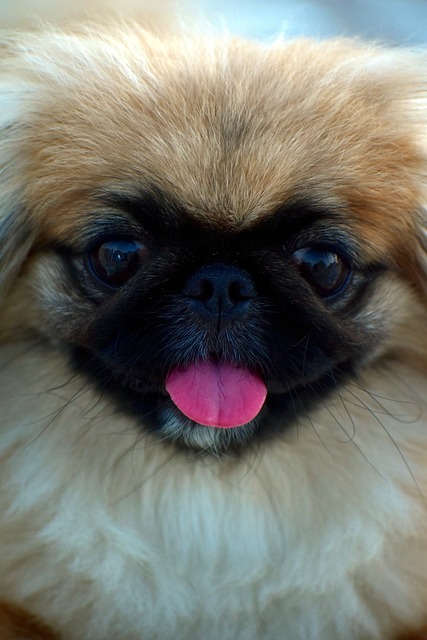
In conclusion, this comprehensive guide to Pekingese dogs has provided a detailed exploration of this unique and charming breed. Throughout our discussion, we’ve delved into the history, distinctive characteristics, and essential care considerations that define Pekingese dogs. Known for their regal appearance, affectionate nature, and independent spirit, Pekingese make wonderful companions for those who appreciate their dignified demeanor and loyalty. They thrive in indoor settings and enjoy spending quality time with their families. As you embark on your journey with a Pekingese, may you appreciate their special qualities and form a deep bond with this delightful breed, creating cherished memories and experiences together.







